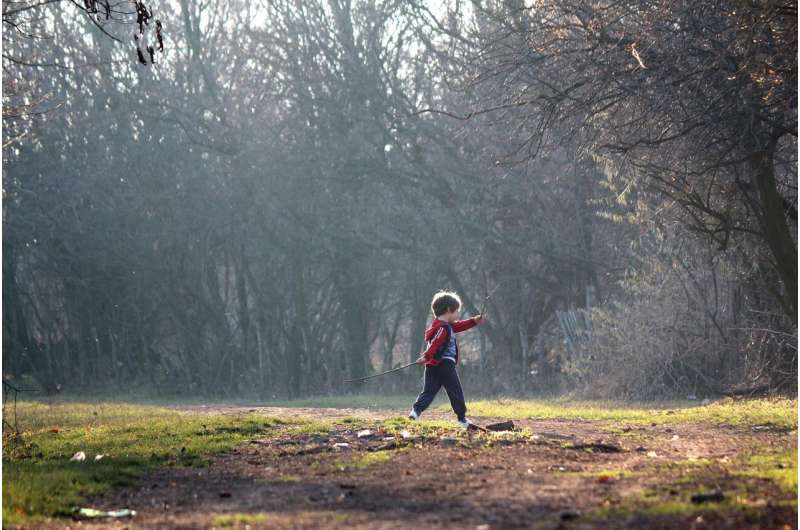Allow children to play in nature on their own more often

Places to play outdoors for children are increasingly located in the built-up environment and often look gray, with few natural elements. However, nature can add something, especially in outdoor play areas where children can release their energy. This was observed by researchers from Radboud University in a study where more than 1,500 primary school pupils were asked to draw and analyze their favorite place to play outside. They published their conclusions in the Children's Geographies journal last week.
After creating their drawing, the children answered a few questions about why it is their favorite place, what they do there, and whether they also go there without adult supervision. Finally, the children analyzed their drawings themselves: did their drawing include nature, man-made natural elements, or a man-made thing? Researchers Bernadette van Heel, Riyan van den Born, and Noelle Aarts studied the drawings to gain a better understanding of the role nature plays in these outdoor play areas.
Without parents
On average, the portion of green elements on the drawings was a little higher than man-made things. However, the green elements were mainly surface areas such as grass or sand in playgrounds. Only a very small group of children drew a bit of nature, such as a wood. The drawings of places with comparatively more nature were usually places where children were only allowed to go with an adult. "That is a pity, as we observed that 90% of the children chose a favorite place where they could go without adults, where they could release their energy undisturbed. That's why we say: make natural places where children can play on their own possible," says Bernadette van Heel.
"Unfortunately, the urban character of these drawings seems to be in line with other studies that show that children are spending less and less time in nature," says Van Heel. "This is not only because children are busier and therefore play outside less; it is also because nature or natural elements are too far away for many children. Children are increasingly spending time in artificial, man-made places in urban areas."
Lower standards
Everyday experiences with nature are important, both for the well-being and the skills of the child, but also for the development of a connection with nature. That bond seems to be important in later life for people becoming committed to preserving nature.
"We can speak of a 'memory loss': what is normal for our generation in relation to nature will become the standard, while previous generations are probably used to nature with greater biodiversity, for example. If we are not aware of this phenomenon, then our standards for nature will continue to decrease. The same may happen to what we consider the standard for places to play outdoors."
The drawings were made during "Alle scholen verzamelen" (all schools come together), the citizen science day for primary school pupils that is organized annually by the national science hubs.
More information: B. F. van Heel et al, Everyday childhood nature experiences in an era of urbanisation: an analysis of Dutch children's drawings of their favourite place to play outdoors, Children's Geographies (2022). DOI: 10.1080/14733285.2022.2071600
Provided by Radboud University




















